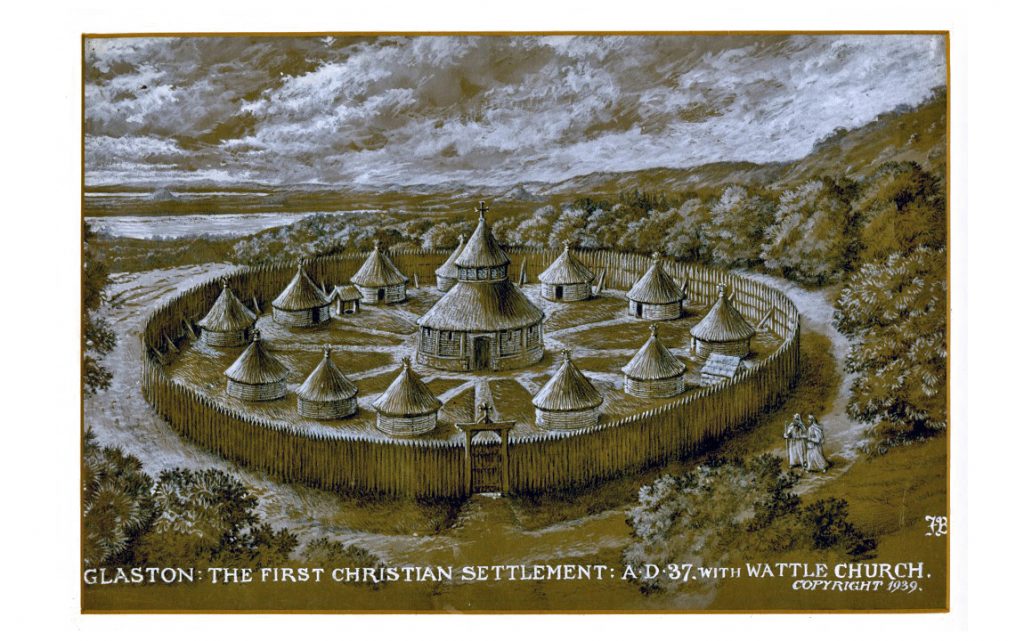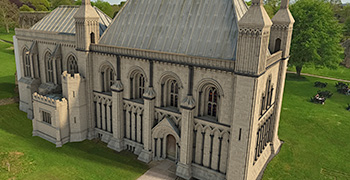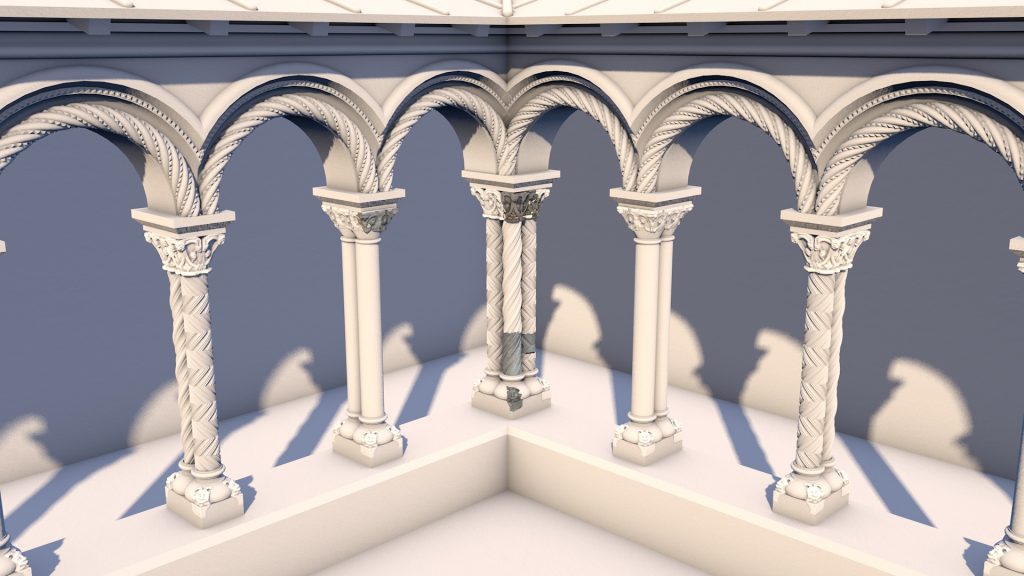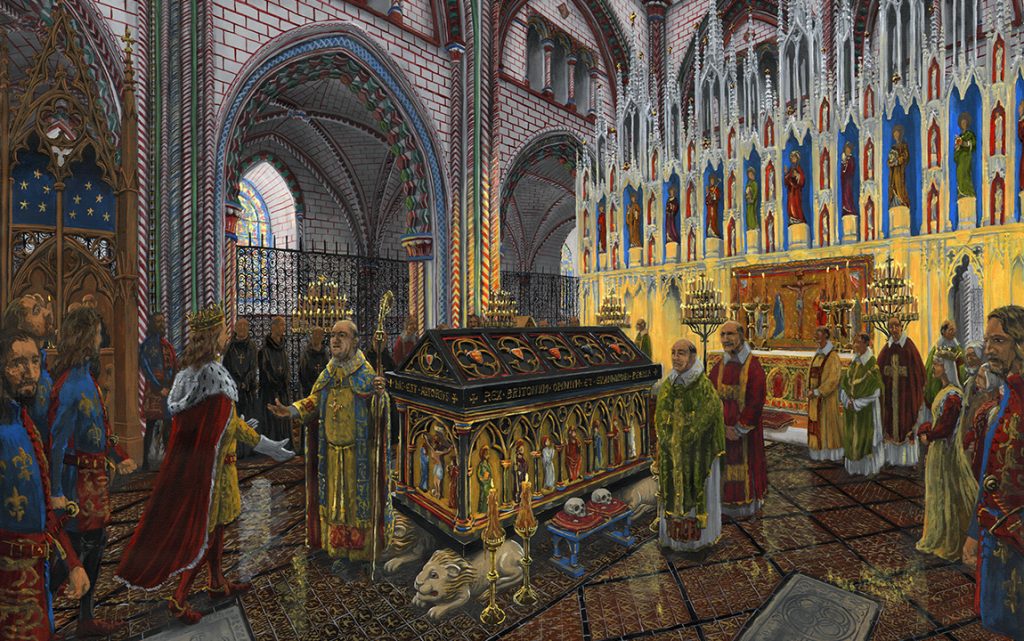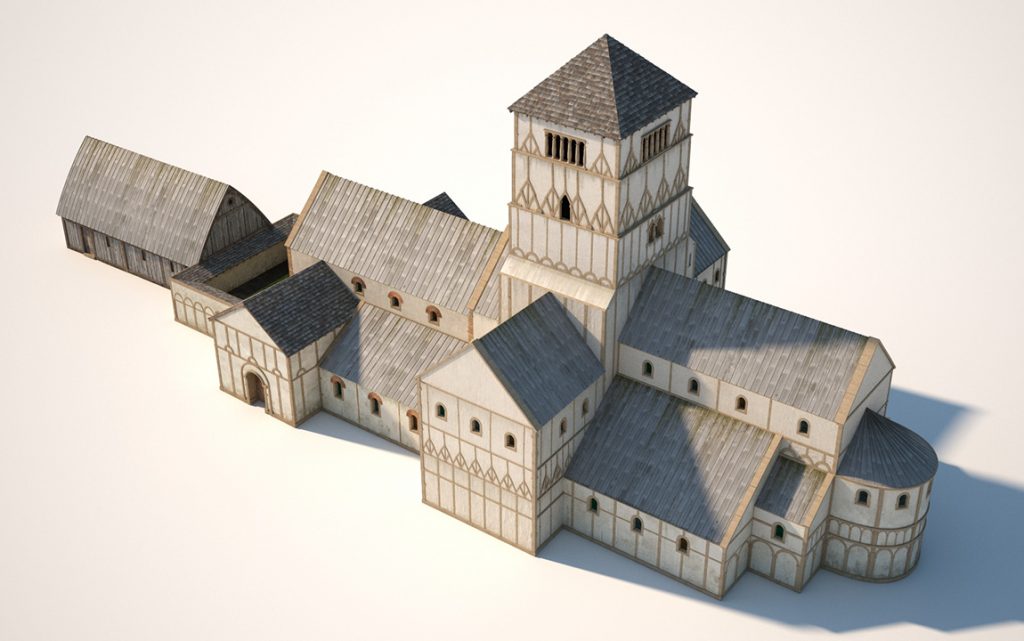Methods
The Lady Chapel was built after fire had destroyed the ‘Old Church’ in 1184. The exterior walls are still standing, but the exterior has lost much of its contrasting stonework…Read More >
Among the treasure-trove of architectural fragments at the abbey is a collection of finely-carved blue-lias fragments which have long been regarded as part of Henry of Blois’ magnificent 12th-century cloister….Read More >
Many visitors to Glastonbury Abbey today expect to see a visible monument to King Arthur, commemorating the popular belief that he was buried at Glastonbury in the 6th century. In…Read More >
When creating 3D visualisations of lost buildings we must use all the evidence available to help us define what these structures looked like (read our post on recreating lost buildings…Read More >

